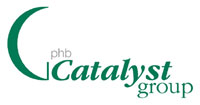Cash Flow Management > A Key Driver of Contractor Success
One of the biggest challenges for contractors is CASH FLOW management. You can make an accounting profit and still get wiped out. This can happen in any economic climate, but is a particularly acute problem in a down market when competitive pressure is severe. The recent prolonged slump in the construction industry stretched the financial capacity of even the best of contractors and subcontractors.
Subcontractors are often at risk for cash flow imbalances because they at lower rungs of the contracting ladder, at least two-to-three levels removed from the money. In a tight market, the cost of money can be squeezed out via the bidding process, increasing the risk that late cash receipts will erode profitability.
There are steps you can take to ensure that cash flow has visibility within your organization and is a priority for your project teams.
1. Be sure that mobilization requirements are clearly spelled out in your contract.
2. Find out if the GC or CM you work for has an imprest account for job start-up.
3. Review the payment clause(s) in your contract. Generally, CM contracts stipulate a “pay-when-paid” requirement. If this is the case, see if you can negotiate better terms. Check the payment requirement laws in your area and be cognizant of them.
4. Make sure that retention is managed properly. Push to have the retention reduced at the mid-way point in the project. For example, from 10% to 5%. This must be clearly delineated in your contract.
5. Be aware of prompt payment terms, which are often required in government-funded projects. Know the requirements of the agency administering the project, and verify that these terms have been included in your contract.
6. Tie-in executive and project management compensation to cash flow stability. This is an effective method of conveying the importance of cash flow within your organization, and leads to proactive cash flow management.
7. Timely cash flow, like most elements of effective project management, derives from proper project management, communication and documentation. Update your project schedule monthly and demand that it is issued with a narrative that explains how the critical path has changed!
8. Change orders, if improperly administered, can bury a subcontractor. Again, it comes down to proper communication, documentation and follow-up. Payments for change orders can be negotiated and should be part of the agreement.
9. Know your contracts inside-out and understand the pitfalls and opportunities inherent in your agreements.
10.Final payment problems usually result from quality issues at the end the project. These can stem from extensive punch lists, poorly administered permitting processes, disorganized close-out and TCO issues. Implement a standard process for managing close-out and be sure to communicate this to your team and to your client. Remember that well executed job close-out is a process. It does not start during the end of the project. Rather, it is the result of sound project management practices and effective project communication and controls.
Be aware that cash flow is as important as profitability. Evaluate the diversity of your cash flow against your ability to access cash, either via savings or from credit lines. Be sure that your contract agreements clearly address payment terms. Communicate these terms to your project managers and to your executives. Remember that Cash is King in the construction industry.
– Mark Harari, Co-President, phb Catalyst, Inc.








Recent Comments